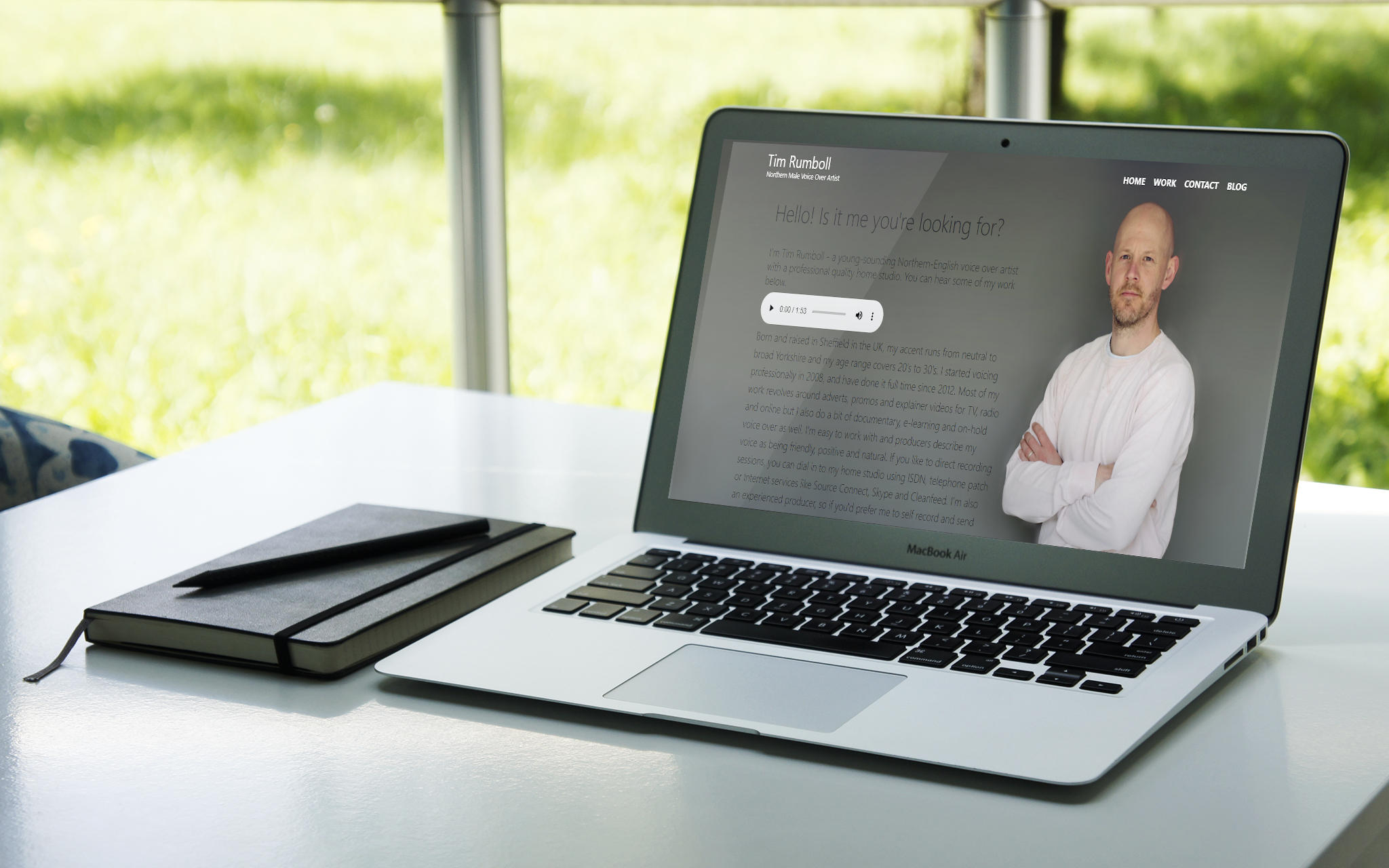What goes into a voice over booth
There are a number of elements that each play a part in me being able to produce professional quality voice over recordings from my home studio. One of the most important though, is the space I record in.
If you’re trying to provide professional quality voice over to clients, you need to have a quiet, acoustically-treated recording space. No ifs, no buts. Now depending where you live and the quality of your double glazing, that might just be a room in your house. If you live somewhere a bit noisier you’ll probably need some form of booth or a room within a room. These voiceover booths are available to buy from places like StudioBricks and WhisperRoom or you could use a company to build a bespoke booth for you. Alternatively, you can build one yourself.
What goes into the construction of the voice booth largely depends on how much background noise it needs to block out. Most bought booths claim to reduce background noise by something like 45dB. That figure is hugely dependent on frequency - with low frequency noise being much harder to block out than higher frequencies. The best way to stop unwanted noise on your recordings is by building a booth or voice over recording space with a double wall construction. This has an air gap between the walls which makes it really difficult for noise to transmit through.
Once you’ve got the booth sorted to give you a sound-proof space to record your voice overs in, the next thing to think about is room treatment.
But what’s room treatment I (don’t) hear you ask? Well, every room has it’s own signature sound that is created when sound waves bounce around it - think about how your voice sounds different in a tiled bathroom from a furnished living room. Hard surfaces like tiles reflect most of the sound back into the room allowing it to then bounce off other walls and surfaces, and it’s this that gives bathrooms that obvious bathroom sound. On the other hand, soft surfaces like cushions, sofas and fabric curtains, absorb sound (or allow it to pass through them) resulting in far fewer reflections and creating a much less ‘echoey’ sound (yes I know echoey isn’t the right word but I’m trying to keep things simple.)
So does this mean you can just hang up curtains in the booth and that will get rid of any reflections? Unfortunately not. The problem is that sound is made up of different frequencies (which our ears register as either low or high notes). Whilst curtains are great at absorbing high frequencies, low and low-mid frequencies pass straight through them and bounce off the wall like they’re not there. This can result in muddy or boomy sounding voice over recordings due to the high frequencies being removed and the low frequencies being left to reverberate around the room.
There is a simple way to remove lower frequencies though. All it takes is a combination of insulation and depth. In the same way that insulation keeps heat in by trapping air within its nest of fibres, the moving air that makes up a sound gets impeded when it runs into the insulation, which we hear as absorbtion. To maximise the amount of absorbtion, the insulation has to be half as deep as the wavelength of the sound. To stop room reflections from a kick (or bass) drum sound would need 3 or 4 feet of insulation as its sound is made up of frequencies that go down to between 40 and 60Hz.
Most rooms aren’t big enough to take 8 foot off the length and width though so how do we overcome this? An alternative for voice overs is to use heavier insulation. This reduces it’s effectiveness at absorbing the very lowest frequencies but increases the absorbtion of frequencies that make up the human voices. Putting 60KG/m3 on the walls at a thickness of 10cm will absorb down to 100Hz which is generally low enough for most people.
The best way of attaching the insulation to walls is by wrapping them in fabric. Options for doing this are to build light-weight frames made out of wood and wrap the fabric over these or just wrap the insulation almost like you were making a large cushion cover! The amount of coverage you need, for me, depends on the size of your room. If you’re in a voice over booth, I’d recommend covering nearly every surface possible (and if it sounds too dead add a 1D binary diffuser over the top - google it if you’d like to find out more).
Once this is done, you should have a voiceover recording space that sounds quiet, acoustically dead and ready for you to start work. Good luck!

Comments